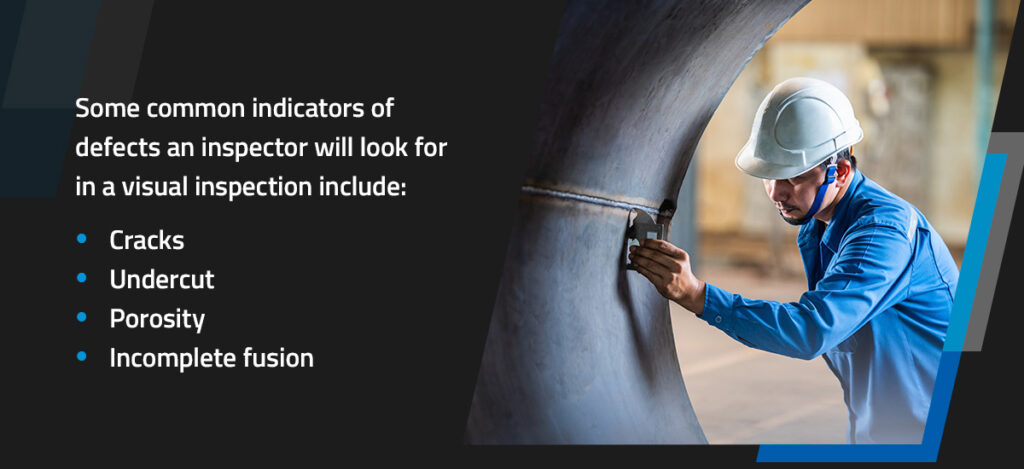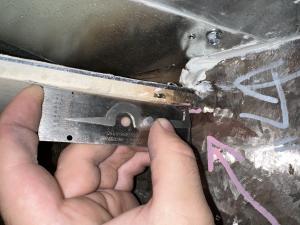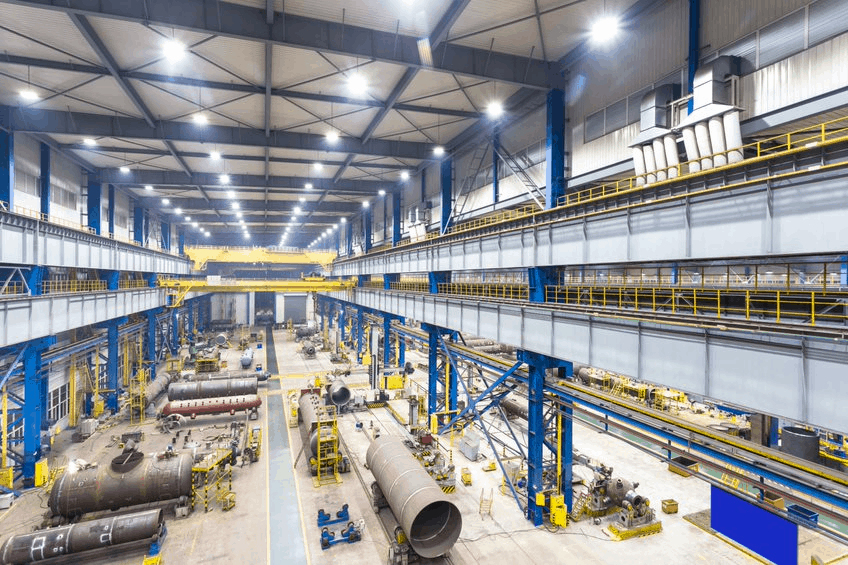What to Expect from a Comprehensive Welding Inspection Racine
Wiki Article
Innovative Methods to Fillet Weld Evaluation and Screening: Enhancing Weld High Quality and Compliance Requirements
In the realm of welding, the high quality and stability of fillet welds play a critical duty in ensuring the structural stability and integrity of various industrial elements. With the constant drive for improved performance and compliance with rigid criteria, the expedition of cutting-edge methods to fillet weld evaluation and screening has actually ended up being imperative. As sectors advance, the standard methods may no more be adequate in fulfilling the needs of modern welding applications. By welcoming sophisticated innovations and approaches, a brand-new horizon of possibilities arises in the world of weld quality assessment and adherence to conformity requirements.Advanced Non-Destructive Testing Methods
Using cutting edge modern technologies, advanced non-destructive screening approaches play an important duty in guaranteeing the honesty and quality of fillet welds. These approaches, such as phased array ultrasonic testing (PAUT) and magnetic fragment screening (MPT), offer in-depth understandings into the weld's interior framework without triggering any damage to the product. PAUT, for example, uses numerous ultrasonic aspects to check the weld from numerous angles, supplying an extensive visualization of possible defects like lack of blend or cracks.By using these innovative non-destructive testing methods, weld inspectors can properly analyze the top quality of fillet welds, making certain conformity with sector criteria and regulations. The capability to discover flaws early on not just boosts weld quality yet also prevents costly rework or failures in structural stability, highlighting the importance of these cutting-edge screening techniques in welding evaluations.
Robotics and Automation in Inspection
The assimilation of robotics and automation has actually changed the assessment process for fillet welds, enhancing performance and accuracy in top quality evaluation. Robotics supply exact control and repeatability in inspecting welds, guaranteeing consistent and reliable results. Automated systems can be set to comply with specific inspection courses, ensuring extensive coverage of welds and minimizing the danger of human mistake.Robotic examination systems furnished with advanced sensing units can spot and gauge weld features with high accuracy, providing in-depth data for evaluation. These systems can identify flaws such as splits, lack of blend, and porosity, enabling prompt rehabilitative actions to be taken. Furthermore, robotics and automation permit real-time data collection and evaluation, providing immediate comments to drivers and facilitating quick decision-making processes.
Moreover, the usage of robotics and automation in fillet weld inspection improves general efficiency by lowering inspection times and enhancing assessment throughput. By simplifying the inspection process, manufacturers can guarantee weld high quality and conformity criteria are fulfilled successfully, inevitably leading to cost financial savings and enhanced product quality.
Utilizing Expert System for Analysis
Synthetic intelligence plays a critical function in improving the effectiveness and accuracy of analysis in fillet weld evaluation procedures. By using the power of AI, inspectors can streamline the evaluation of weld top quality and conformity requirements, causing much more exact and trusted results. AI algorithms can quickly process substantial amounts of information from weld examinations, identifying issues or variances that may be challenging to understand the nude eye. This sophisticated technology makes it possible for real-time surveillance of weld high quality, enabling for immediate rehabilitative actions to be taken if any kind of concerns are identified.Furthermore, AI systems can gain from previous evaluation data, consistently improving their ability to identify possible flaws and discrepancies in fillet welds. This flexible discovering capacity improves the overall quality assurance process, reducing the likelihood of human mistake and making certain that welds meet the required standards. By incorporating expert system right into fillet weld evaluation, sectors can achieve higher levels of efficiency, uniformity, and conformity in their evaluation techniques.
Portable Devices for On-Site Evaluation
 Enhancing field evaluation performance, the fostering of mobile devices revolutionizes on-site assessment processes for fillet welds. These tools use flexibility and benefit, permitting inspectors to perform thorough examinations in various locations, including challenging or remote environments. Portable tools such as ultrasonic testing devices, magnetic fragment inspection tools, and electronic radiography systems give real-time information and high-resolution imaging capacities, making it possible for fast decision-making and instant comments on weld high quality.
Enhancing field evaluation performance, the fostering of mobile devices revolutionizes on-site assessment processes for fillet welds. These tools use flexibility and benefit, permitting inspectors to perform thorough examinations in various locations, including challenging or remote environments. Portable tools such as ultrasonic testing devices, magnetic fragment inspection tools, and electronic radiography systems give real-time information and high-resolution imaging capacities, making it possible for fast decision-making and instant comments on weld high quality.One considerable advantage of portable devices is their capacity to enhance examination treatments, lowering downtime and boosting general productivity. Inspectors can easily transport these devices to various task sites, getting rid of the requirement for moving heavy equipment or elements to off-site facilities. Additionally, the transportability of these devices advertises cost-effectiveness by decreasing transport expenses read review and accelerating assessment timelines.
In addition, using portable devices for on-site assessment promotes proactive top quality control steps, as inspectors can promptly recognize and deal with any kind of possible welding flaws or discrepancies. By including these innovative modern technologies into on-site inspection techniques, welding professionals can make certain compliance with sector standards and boost weld quality, eventually leading to improved architectural stability and safety and security in different welding applications.
Assimilation of Data Management Equipment
Having enhanced on-site inspection processes through the application of portable tools, the following stage involves the smooth assimilation of data administration systems to better enhance effectiveness and information evaluation capabilities in fillet weld assessment and testing. Welding Inspection Racine. By integrating information management systems right into the inspection process, organizations can improve data collection, storage space, and analysis. This integration allows for real-time surveillance of weld high quality, prompt recognition of flaws, and punctual decision-making to correct any kind of problems that may develop throughout the inspection procedure
The integration of information management systems makes it possible for seamless interaction between various stakeholders involved in the assessment process, promoting collaboration and improving total high quality control steps. Ultimately, the combination of information administration systems offers to elevate the criteria of fillet weld evaluation and screening, ensuring conformity with sector policies and improving weld quality.
Conclusion
To conclude, ingenious techniques to fillet weld evaluation and screening have actually substantially enhanced weld quality and conformity criteria. Advanced non-destructive testing techniques, robotics, automation, man-made knowledge, portable tools, and information administration systems have actually revolutionized the way weld evaluations are carried out. By utilizing these technologies, markets can ensure that welds fulfill the called for top quality standards and policies, eventually enhancing total performance and safety in welding processes.
By utilizing these sophisticated non-destructive screening article methods, weld assessors can properly analyze the high quality of fillet welds, ensuring conformity with market requirements and policies. Portable devices such as ultrasonic screening devices, magnetic particle evaluation equipment, and digital radiography systems provide real-time data and high-resolution imaging abilities, making it possible for quick decision-making and immediate feedback on weld top quality.
Having actually maximized on-site inspection processes through the application of mobile tools, the following phase entails the seamless integration of data administration systems to additionally boost efficiency and data evaluation capacities in fillet weld assessment and screening (Welding Inspection Racine). Eventually, the assimilation of data monitoring systems offers to boost the criteria of fillet weld examination and testing, making certain compliance with sector guidelines and enhancing weld high quality
 In conclusion, innovative techniques to fillet weld examination and screening have actually dramatically look at these guys boosted weld high quality and compliance requirements.
In conclusion, innovative techniques to fillet weld examination and screening have actually dramatically look at these guys boosted weld high quality and compliance requirements.Report this wiki page